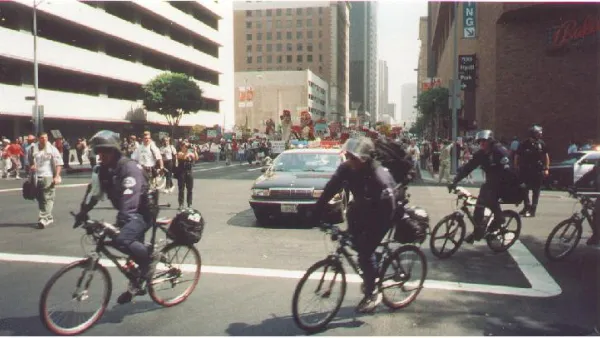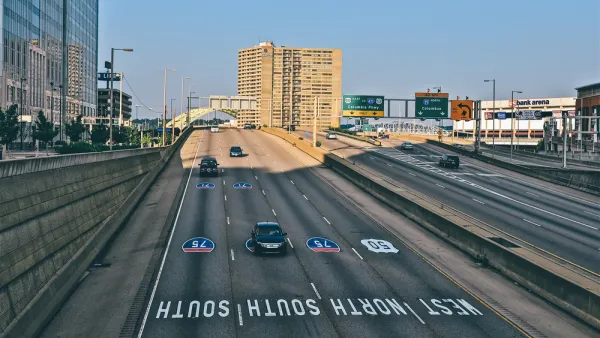Sarah Goodyear offers a brief history of urban development in postwar Europe, and tells of just how close the bicycle capitals of the West came to putting cars before people.
Like all Western cities, Copenhagen and Amsterdam faced tremendous economic and cultural pressure to modernize throughout the 20th century, and to reshape themselves in the image of the automobile. How, then, did these European capitals manage to skirt the trend and emerge as 21st century beacons of hope for human-scale streets?
The key, Goodyear suggests, lies in public protest.
Much of the bicycle- and pedestrian-oriented character seen in the two cities today is not some leftover from a bygone, pre-motorized era, but a recent reclaiming of city space from the automobile. Planners "[ripped] out cycle tracks and [started] to design streets for cars as Europe modernized in the wake of World War II," writes Goodyear. "By the early 1960s, much of the cycling infrastructure that had existed in the pre-war era was gone, and the percentage of the population using bicycles for transportation fell to an all-time low of 10 percent."
It wasn't until the '70s and '80s that the citizens of Copenhagen and Amsterdam came together in protest against rising pedestrian fatalities – many of them children – and the threat of an energy crisis. Danes painted white crosses in the road to mark accident sites where cyclists had been killed. Dutch schools and parents led the charge to bring demonstrators to the streets. The wave of public disapproval steered government planning in a more human-conscious direction.
"What happened was that urban planners started thinking bicycles first and cars second," writes Colville-Andersen. "Building infrastructure to keep cyclists safe and save lives. We haven't looked back since."
FULL STORY: Why the Streets of Copenhagen and Amsterdam Look So Different From Ours

Analysis: Cybertruck Fatality Rate Far Exceeds That of Ford Pinto
The Tesla Cybertruck was recalled seven times last year.

National Parks Layoffs Will Cause Communities to Lose Billions
Thousands of essential park workers were laid off this week, just before the busy spring break season.

Retro-silient?: America’s First “Eco-burb,” The Woodlands Turns 50
A master-planned community north of Houston offers lessons on green infrastructure and resilient design, but falls short of its founder’s lofty affordability and walkability goals.

Test News Post 1
This is a summary

Analysis: Cybertruck Fatality Rate Far Exceeds That of Ford Pinto
The Tesla Cybertruck was recalled seven times last year.

Test News Headline 46
Test for the image on the front page.
Urban Design for Planners 1: Software Tools
This six-course series explores essential urban design concepts using open source software and equips planners with the tools they need to participate fully in the urban design process.
Planning for Universal Design
Learn the tools for implementing Universal Design in planning regulations.
EMC Planning Group, Inc.
Planetizen
Planetizen
Mpact (formerly Rail~Volution)
Great Falls Development Authority, Inc.
HUDs Office of Policy Development and Research
NYU Wagner Graduate School of Public Service




























